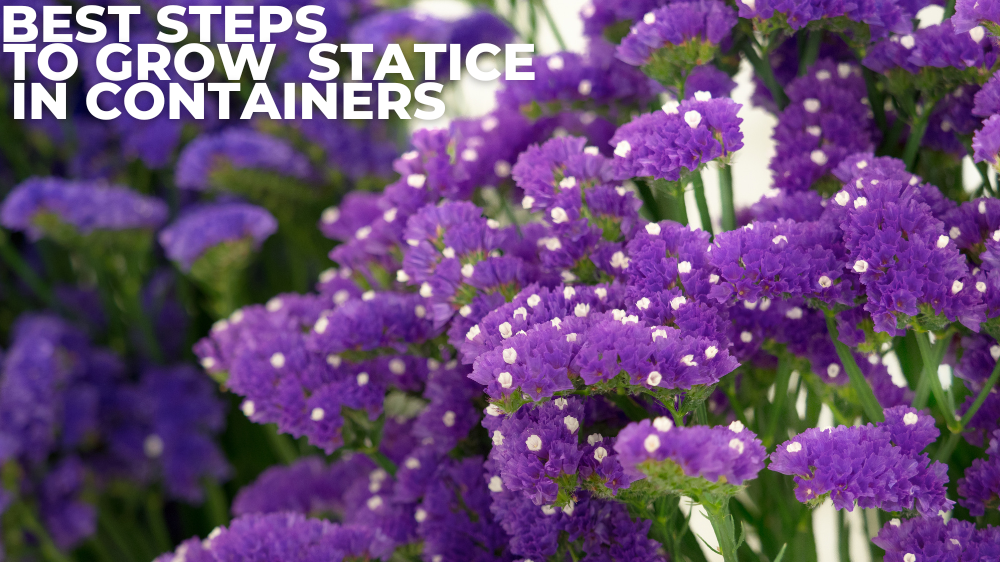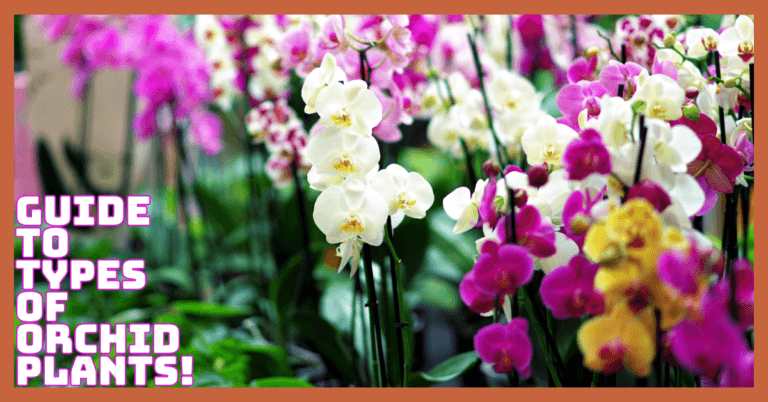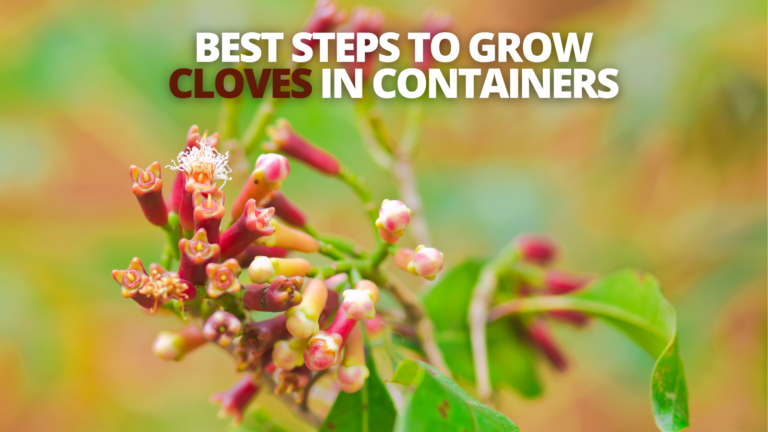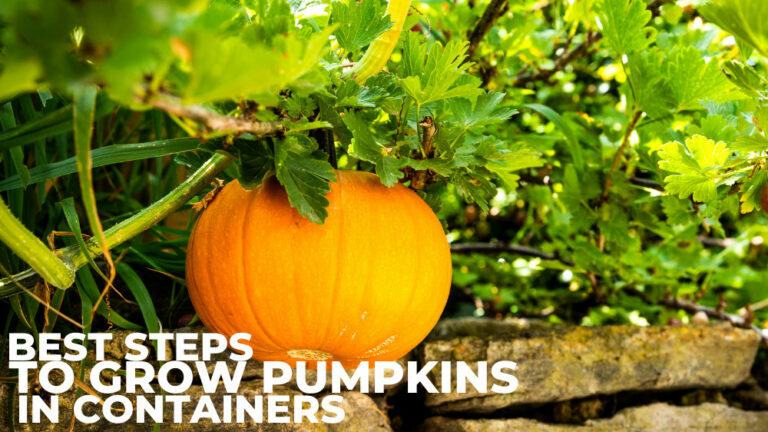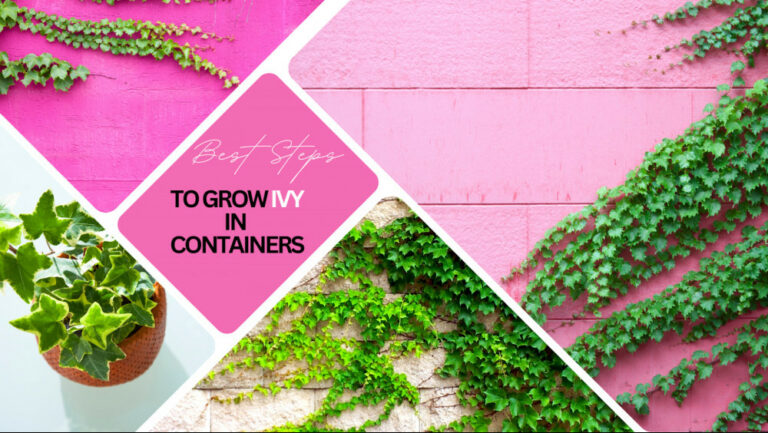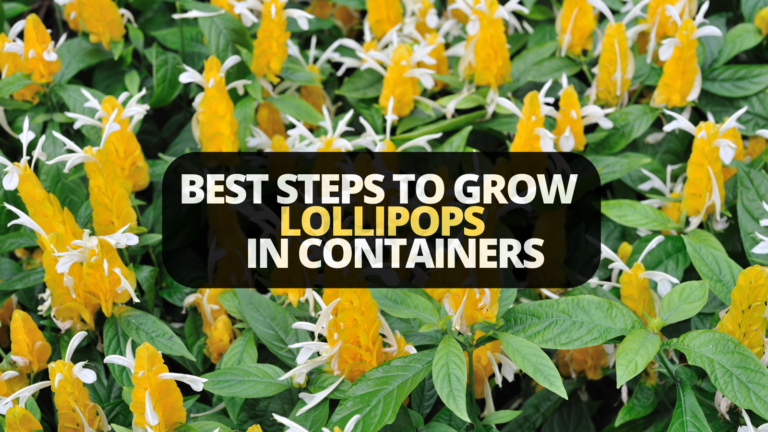Best Steps To Grow Statice In Containers
Best Steps To Grow Statice In Containers
Have you ever admired some dried flowers and wondered how they managed to be so well preserved?
Most likely, the flowers were statice, which produces lovely dry bouquets and complements to dried arrangements.
It grows in the garden and is in gorgeous, vibrant bloom. Additionally, it makes an exceptionally long-lasting cut flower for fresh bouquets.
In purple, pink, yellow, and white hues, statice is a taller (two to three feet) plant with a cluster of tiny blooms at the top.
Statice in gardens has a beautiful wildflower appearance, ideal for rocky or border regions. Statice's dense, papery blossoms form a lovely container flower.
Because of its adaptability, statice is a valuable addition to any garden. The most excellent part is that it is a simple annual to grow and care for. The blog will help you ideally grow statice in containers.
History & Origin Of Statice
Sea lavender, also known as Limonium sinuatum or statice flower, is a common decorative plant that can survive in challenging, saline environments.
The statice flower, long-cultivated in the Mediterranean area for medical purposes, has a distinct aroma and blooms with purple and white blossoms that are perfect for long-lasting dry arrangements.
Statice, which in the floral language is translated as “I miss you,” is connected to memory and remembering.
Statice flowers represented recollection and remembrance of Victorians. This relationship might have arisen from the blooms' long-lasting colour retention when dried.
You can let someone know you miss them and are thinking of them by giving them a bouquet of these stunning purple and white flowers. Other meanings associated with sea lavender are success and sympathy across cultures.
The Limonium genus, which has roughly 120 blooming plant species, includes statice flowers, commonly called sea lavender.
The Plumbagincacea family, usually called the leadwort or plumbago family, includes Limonium.
In their native countries, statice flowers have long been prized for their vibrant, long-lasting blossoms.
Due to its numerous culinary and therapeutic applications, sea lavender has been grown for millennia throughout Europe and Eastern Asia.
It is now cultivated worldwide and is particularly well-liked for use in dried flower bouquets.
Types Of Statice
Statice flowers are available in pink, lavender, and white hues. The small statice blooms resemble funnels and have a delicate, airy, hazy appearance reminiscent of smoke in the spring and summer. Some statice species emit a disagreeable smell.
Calyx clusters of 1 to 2 inches across are present on English statice. The stems are one to one foot long.
Smaller calyxes, arching clusters, smooth stems, and no foliage are characteristics of seafoam statices.
The English statice has calyxes that are yellow, white, purple, lavender, or pink with tiny white or yellow flowers inside, but the little gray bracts of the German statices arch backward.
Latifolia White calyxes with blue-violet blooms are present. A fixative can be used to spray-dry statie flowers. When dormant, sea lavender dislikes damp feet.
1. Limonium Sinuatum
The Mediterranean plant species Limonium sinuatum, often called statice, sea lavender, notch leaf marsh rosemary, or sea pink, is a member of the Plumbaginaceae family and is recognized for its papery petals that can be used in dried arrangements. The entire Mediterranean Basin is its natural habitat.
2. Perez's Sea Lavender
A species of Limonium called Limonium perezii is also referred to as Perez's sea lavender and seafoam statice. Statice is another name for it, as are sea lavender and marsh rosemary. It is indigenous to the Canary Islands' shores, but gardens worldwide use it extensively.
3. Mediterranean Sea Lavender
A species of flowering plant in the family Limonium known as “common sea-lavender” is native to Atlantic regions of Europe, ranging from southwestern Sweden to southwestern Iberia and the Azores.
4. Limonium Californicum
The Plumbaginaceae family species of sea lavender is called Limonium californicum. It is sometimes referred to as California sea lavender and western marsh rosemary.
It can occasionally be seen in Nevada and Arizona but is endemic to western North America, from Oregon to Baja California.
5. Limonium Arboretum
Sea lavender called Limonium arboreum is also referred to as tree limonium and siempreviva. It is a plant of coastal habitat native to the Canary Islands.
6. Limonium Austral
The common name native sea lavender refers to the sea lavender species Limonium australe.
It originates from Australia, where it has been observed living in mud flats and saltmarshes along the eastern coast from northern Tasmania to Mackay in Queensland.
Grow Statice In Containers
Statice (Limonium sinuatum), often cultivated as spring annual plants, are excellent for adding colour and flair to your garden or container garden.
With their perpetual, paper-textured blossoms in various brilliant colours, statice is a favourite among children. They make stunning cut flowers and will make any space in your house more vibrant.
Choose The Right Container
Pick a pot that is 200 mm in diameter and deep or more. Place in the direct sun.
High-quality potting soil, like Yates Premium Potting Mix, should be used to fill the selected containers.
Seeds should be sown directly into the container at a depth of 6 mm, covered, and firmly pressed down.
Soil To Grow Statice In Containers
The fact that statice plants want to live in exceptionally well-drained soil is the most crucial factor to remember.
Because of its light texture and superior drainage, light sandy soil is what they often thrive in the wild. All you need to do to lighten packed soil in your garden is add some sand.
Watering Requirements
Watering your statice plant won't take much of your day. These plants are reasonably drought tolerant; most of the time, natural precipitation will be more than adequate water.
Just remember to wait until the soil is entirely dry in between waterings.
Stick your finger on it to check if the soil is still damp. All that is needed is less than an inch of water per week.
Sunlight
Statice plants are organisms that enjoy the sun. This indicates that they should be exposed to direct sunshine for at least 6 to 8 hours daily.
Statice plants will strive to grow in the direction of the sun if placed in full or partial shade, and they can become rather lanky and delicate. They are more likely to fall over in situations like this, which is something we don't want.
Temperature
When it comes to temperature tolerance, statice plants excel. Depending on the species, their tolerance will vary, but generally speaking, they'll be all right exposed to hot or cold conditions.
The most important thing to remember is that successful transplantation requires at least 50°F for most specimens.
Fertilizer
Fertilizer is not necessary for the growth of statice plants. They seem to function much better in deficient soils!
Statice can grow in substandard soils; do not overfertilize. To prolong plant flowering till fall, remove spent flower heads.
Pruning
Pinch back the wasted blooms on your statice plant to encourage a second blooming season. However, it is not required.
This works out well because you can hang the stems that were cut short upside down to make a dried flower arrangement.
Propagation
You currently possess all the knowledge required to develop your statice plant successfully. The only thing left to learn is how to grow your very own!
The best way to achieve this is to plant statice seed. To get you started, consider these actions:
- The optimal time to plant statice seeds indoors is at least 8 to 10 weeks before the first anticipated frost of the season. When the weather is warm enough, the seedlings will be large enough to be transferred.
- Because seeds need sunlight to germinate, scatter some statice seeds into a big, broad tray and cover with a thin layer of soil.
- Then, put those pots in a south-facing window and regularly spritz the plants with water because they need moisture when growing. In three to four weeks, sprouts should begin to appear.
- Early in the spring, when the seeds are between 3 and 8 weeks old, they should be prepared for outdoor transplantation. Bring them outside so they can experience a cold spell. The plants will erupt if the temps reach a certain level.
- Select a location in your yard with sand-amended soil that receives plenty of direct sunlight. Make holes that are spaced 12 to 18 inches apart. After transplanting seedlings, give them plenty of water. Statice flower clusters will quickly begin to emerge.
Growing Statice From Seed
After all threat of frost has passed, statice can be grown from seed sown directly in the garden.
- Early in the spring, start indoor statice seedlings.
- After planting and watering the Limonium seeds, cover the pots (or tray) with a couple of layers of newspaper to give the seeds the total darkness they need to germinate.
- The seeds will germinate as soon as 3-5 days if maintained warm at 70°-75°.
- Remove the cover and relocate your plants to a sunny window once most of your seeds have sprouted.
- When the seedlings develop their first “real” leaves, thin and transplant them.
- After all the threat of frost has passed, plant outdoors.
Pests & Diseases Of Statice
If properly cared for, statice is a tough, disease- and bug-resistant plant. Overwatering is the most typical issue with statice.
If overwatered, it is vulnerable to crown rot, leaf spot, rust, and grey mould. You can help water move straight to the roots instead of pooling on the blossoms by watering your plants at the base to avoid these issues. Ensure each plant gets plenty of sunlight daily because it will dry out the water.
Ensure each of your statice plants has enough space for air to flow effectively if you live in a humid region.
Additionally, schedule the watering of your statice plants for the morning so they have time to dry out in the sunlight.
To maintain the health of the other plants, remove any dead or diseased parts of plants or entire plants when preventative measures are unsuccessful.
Best Time To Harvest For Drying
Statice can be used either fresh or dried, but there is a specific season when it should be harvested.
When the blooms are fully developed, statice should be harvested. There is a danger that the blossoms could wilt if picked when they are still immature.
The small white flowers that open on top of the statice flower signify that the flower is mature. The statice flowers are these tiny white blooms.
The flower's calyx is what gives the flower head its colour. The statice is ready for harvesting when the white blossoms on the flower head begin to open. The bloom is mature and less prone to wilting when the little white flowers appear.
Harvesting the blooms before the coloured calyx fades is also a good idea.
Statice flower heads have a stunning, vibrant colour when they are most youthful. Try to catch the vibrant colour and preserve it in dried flower form if you can.
The white blossoms drop off as the flowers age, and the colour begins to fade. When you plant this seed, you will know that the blossom is not at its best for harvesting or drying.
If feasible, harvest statice on a dry day during the colder hours of the day. Before collecting any flowers, especially in the early morning, ensure the morning dew has dried them off.
Where Do You Cut A Statice Flower For Drying?
Cut deeply into the plant to the stem's end that emerges from the rosette if you want long stems. The heap of leaves at the plant's base is this.
This method will provide you with a long stem to work with, but it will also encourage the plant to grow more and promote the development of new statice stems.
Toss the freshly cut stems into a clean pail of fresh water.
Remove any leaves falling into the bucket of water from the lower part of the stem. For hygienic reasons, you should never submerge leaves in your fresh bucket of water.
Preserve
Pick a statice when it is in the best harvesting condition, as previously described, before the blooms start to fade.
The strongest and sturdiest flowers for drying can be obtained by picking the blooms at this stage, which will also help preserve the colour of the dried flowers.
It's crucial to decide beforehand whether you intend to dry the collected blooms when selecting your statice flowers.
This is because drying should start immediately after harvest and conditioning rather than after the flowers bloom for a few days.
All flowers will dry and be maintained best if they are dried at their peak of freshness.
Statice Care
A cost-effective approach to fill your cutting garden with blooms is to grow statice plants from seeds.
Start the seeds inside two months before your typical final frost for the earliest blossoms. The seeds are small and require a light layer of soil.
Standard garden soil that has good drainage is ideal for statice plants.
Since sandy soils are preferable to clay-based soils, you can have more success planting soil in a container garden if your landscape contains heavy soil.
The plants can tolerate some drought and will still look healthy when you return from your summer vacation, especially if you add three inches of mulch to the soil to help regulate temperatures.
Statice plants thrive best when given a little benevolent neglect. They prefer dry, arid soils that are lean and poor.
The plants falter or succumb to fungus diseases when given too much water or fertilizer.
Your statice plants' blooming stalks may droop to the ground as they expand during the season.
The plants can be placed using a grow-through ring stake or by planting them together to act as one solid unit.
Garden Design With Statice
Statice plants, roses and lilies are vital components of the cutting garden. Statice flowers are highly sought-after as filler plants for bouquets due to their delicate appearance and lengthy vase life.
Statice flowers are one of the few that appear almost as lovely when dried as when fresh. They are a favorite among crafters.
If you want to utilize the flowers in crafts or bouquets, avoid planting tiny kinds because long stems are necessary for flower arranging.
Globe amaranth, another simple-to-grow and dry flower for craftsmen prefers the same growing conditions as statice plants.
The money plant Lunaria biennis presents a striking textural contrast with its ethereal translucent leaves and can also be paired with statice.
Conclusion
In addition to its conventional floral uses, statice is reputed to have medicinal properties. Lavender flower oils are extracted to treat piles, ulcers, and toothaches.
Additionally, it is said to have aromatherapy advantages, promoting relaxation and assisting with stress release. So don't miss adding the helpful herb to your small garden.
I trust you enjoyed this article on the Best Steps To Grow Statice In Containers. Please stay tuned for more blog posts to come shortly. Take care!
JeannetteZ
>>>Please click here to read my all-inclusive article about Container Gardening<<<
>>>Are you interested in homegrown herbs and medicine? Please click here to find out more about it!<<<
Your Opinion Is Important To Me
Thoughts? Ideas? Questions? I would love to hear from you. Please leave me your questions, experience, and remarks about this article on the Best Steps To Grow Statice In Containers in the comments section below. You can also reach me by email at Jeannette@Close-To-Nature.org.
Disclosure
This post may contain affiliate links. As an Amazon Associate and other affiliate programs, I earn from qualifying purchases at no extra cost to you. Read my full affiliate disclosure.
You might also enjoy these blog posts:
Best Steps To Grow Cornflower In Containers
Best Steps To Grow Orange Lilies In Containers
Best Steps To Grow Snowflakes In Containers
Best Steps To Grow Hemp In Containers
Best Steps To Grow Globe Thistles In Containers

